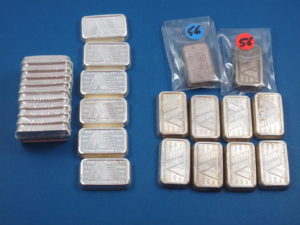 Stefan Gleason writes about cost averaging your silver investment opportunities. This article was recently written for the Money Metals News Service which is free if you sign up for their updates and newsletters. Many other authors have penned articles discussing this same concept to increase your personal holdings. It just takes perseverance and market involvement on a consistent basis. It is smart money that is another tool for your investment kit. Here is his view on the process:
Stefan Gleason writes about cost averaging your silver investment opportunities. This article was recently written for the Money Metals News Service which is free if you sign up for their updates and newsletters. Many other authors have penned articles discussing this same concept to increase your personal holdings. It just takes perseverance and market involvement on a consistent basis. It is smart money that is another tool for your investment kit. Here is his view on the process:
Comments
Seeing the Forest for the Trees — No Comments
HTML tags allowed in your comment: <a href="" title=""> <abbr title=""> <acronym title=""> <b> <blockquote cite=""> <cite> <code> <del datetime=""> <em> <i> <q cite=""> <s> <strike> <strong>